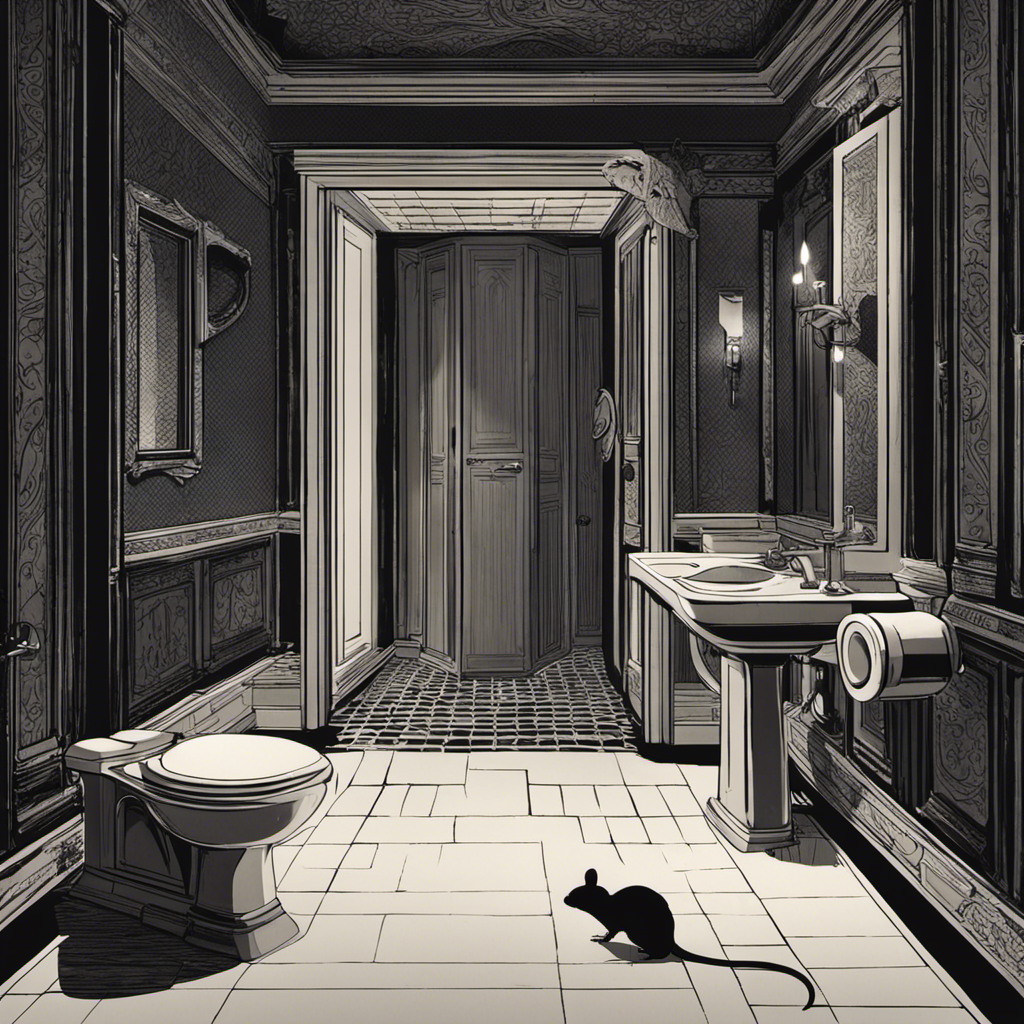As an experienced plumber, I’ve encountered countless situations where getting rid of a toilet became a necessity. Whether you’re remodeling your bathroom or dealing with a broken fixture, understanding the proper steps to remove a toilet is crucial.
In this article, I will guide you through the process, providing you with detailed instructions and tips for a successful removal. So, let’s roll up our sleeves and embark on this toilet-removal adventure together.
Key Takeaways
- Consider alternatives to removing the toilet, such as fixing leaks or tightening bolts.
- Evaluate the cost involved in removing the toilet, including hiring a professional plumber and purchasing a new toilet.
- Assess the necessity of removing the toilet based on the specific situation.
- Properly dispose of the toilet by checking local regulations and guidelines, recycling, donating, repurposing, or hiring a professional waste disposal service.
Assessing the Need for Removing the Toilet
Before you start, it’s important to assess whether or not you actually need to remove the toilet. Determining alternatives and evaluating cost are crucial steps in this process.
First, consider if there are any other options to address the issue without removing the entire toilet. For example, if you’re experiencing a leak, you may be able to fix it by replacing the wax ring or tightening the bolts.
If the toilet is outdated or damaged beyond repair, removing it might be necessary. However, before proceeding, evaluate the cost involved in removing the toilet. Consider factors such as hiring a professional plumber, purchasing a new toilet, and any potential repairs needed.
Gathering the Necessary Tools and Supplies
Once you’ve gathered all the necessary tools and supplies, it’s important to have everything ready before you start. Toilet removal safety is crucial to avoid accidents and injuries. One of the key steps in safely removing a toilet is mastering techniques for lifting heavy toilets. This requires proper body mechanics and the use of appropriate lifting techniques.
To illustrate the importance of safety and lifting techniques, here is a helpful table:
| Safety Tips | Lifting Techniques | Tools and Supplies |
|---|---|---|
| Wear protective gloves | Bend at the knees | Adjustable wrench |
| Use safety goggles | Keep back straight | Screwdriver |
| Have a first aid kit | Lift with your legs | Bucket or container |
| Use proper footwear | Use a dolly or lifting aid | Plumbers putty |
| Keep the area well lit | Avoid twisting your body | Toilet wax ring |
Step-by-Step Guide to Disconnecting the Toilet
To disconnect the toilet, you’ll need to start by turning off the water supply. Troubleshooting common toilet connectivity issues is crucial before proceeding. Make sure there are no leaks or clogs in the water line or the tank.
Once the water supply is off, remove the tank lid and flush the toilet to drain the water. Next, disconnect the water supply line from the bottom of the tank using an adjustable wrench.
Now, it’s time to focus on the toilet flange. Understanding the importance of sealing the toilet flange properly is essential to prevent any future leaks. Inspect the flange for any cracks or damage and replace it if necessary.
Proper Disposal of the Toilet
When disposing of the toilet, it’s important to follow local regulations and guidelines. Here are four eco-friendly toilet disposal methods that you can consider:
-
Recycling: Contact your local recycling center to see if they accept toilets. Some centers have specific guidelines for toilet recycling, such as removing the seat and tank before dropping it off.
-
Donation: If your toilet is still in good condition, consider donating it to a nonprofit organization or Habitat for Humanity. They may be able to use it in low-income housing projects or sell it to fund their initiatives.
-
Upcycling: Get creative and repurpose your old toilet. You can turn it into a unique planter for your garden or use it as a quirky piece of outdoor furniture.
-
Professional Disposal: If none of the above options are feasible, hire a professional waste disposal service that specializes in eco-friendly methods. They will ensure that your toilet is disposed of properly and in accordance with environmental regulations.
Tips for Cleaning and Preparing the Area After Removing the Toilet
After removing the toilet, it’s important to thoroughly clean the area and prepare it for the next steps. Cleaning techniques are crucial to ensure a sanitary and safe environment.
Start by removing any debris or dirt using a broom or vacuum cleaner. Next, use a disinfectant cleaner to thoroughly scrub the floor and walls around the toilet area. Pay close attention to the base of the toilet and the surrounding floor, as these areas can harbor bacteria and odors.
Use a soft cloth or sponge to wipe down all surfaces, making sure to reach into any crevices or corners. Additionally, preventing damage is essential during the cleaning process. Avoid using abrasive cleaners or tools that could scratch or damage the surfaces.
Take care when handling the toilet and any plumbing connections to prevent leaks or breakages. By following these cleaning techniques and preventing damage, you can ensure a clean and safe area after removing the toilet.
Conclusion
In conclusion, removing a toilet may seem like a daunting task, but with the right tools and steps, it can be accomplished efficiently. Remember to assess the need for removal, gather the necessary supplies, and follow the step-by-step guide to disconnecting the toilet.
Proper disposal of the toilet is essential, and cleaning and preparing the area afterwards is crucial.
Did you know that according to a survey conducted by a plumbing association, the average lifespan of a toilet is approximately 50 years? It’s fascinating to think about the longevity of this essential fixture in our homes.
With this knowledge, you can confidently tackle the task of removing a toilet when necessary.










